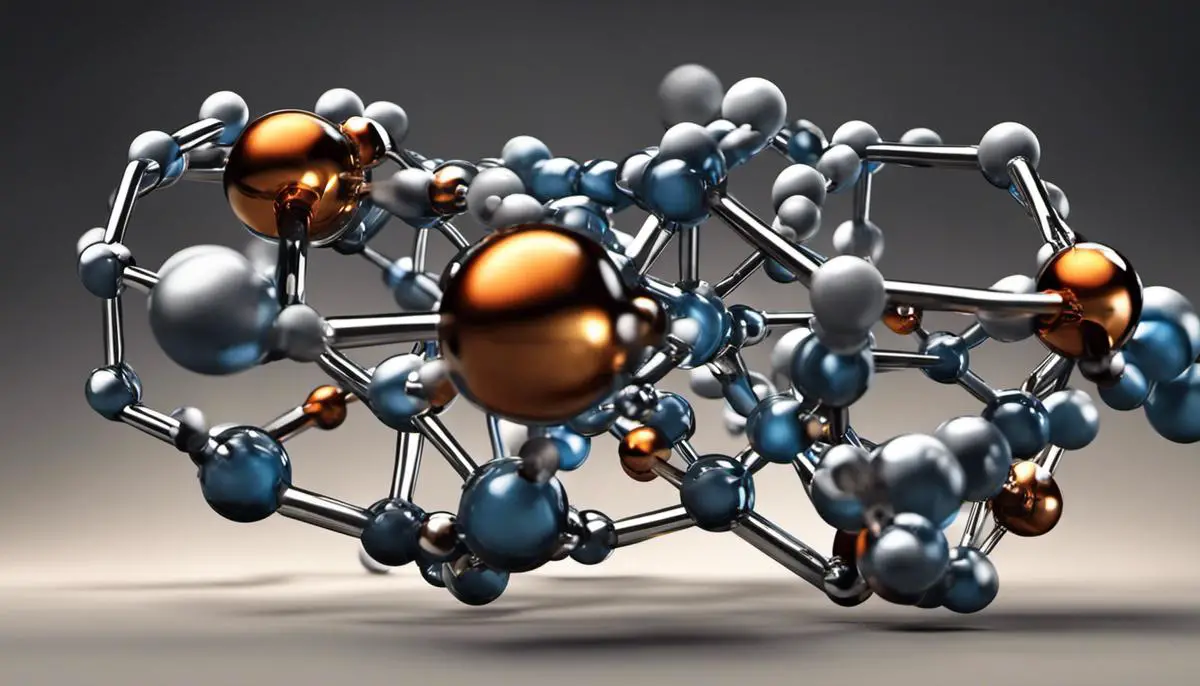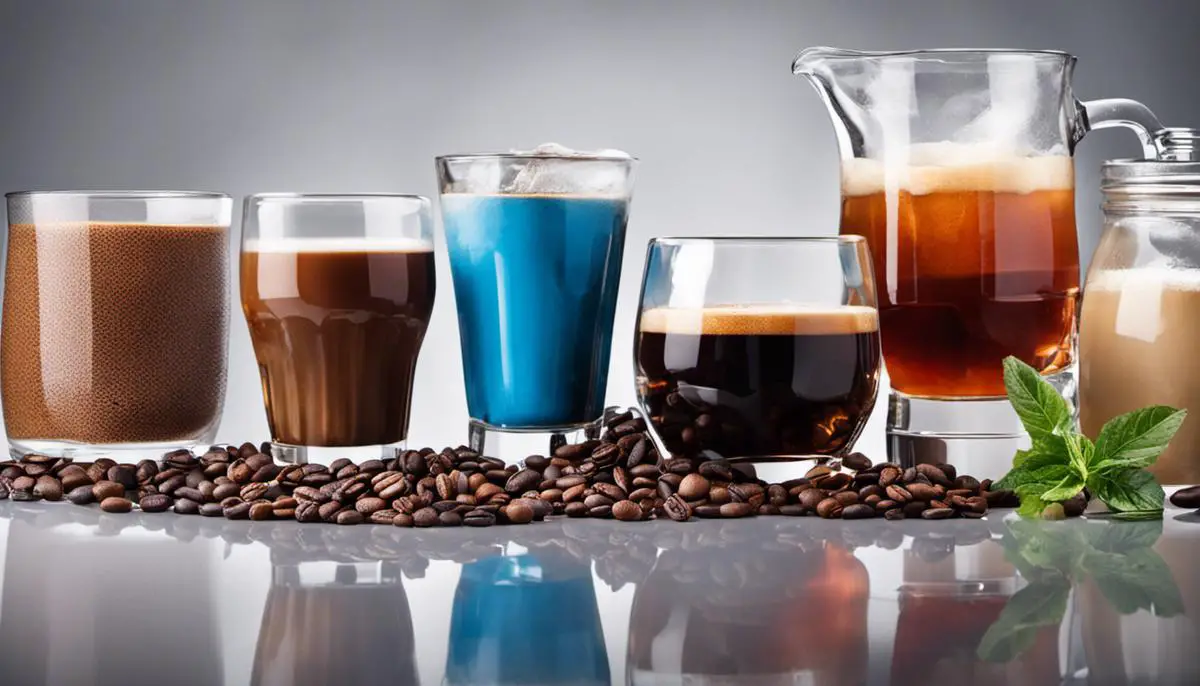
The omnipresent compound, caffeine is an integral component of our daily lives, infiltrating numerous food and beverage products. As the world’s most widely consumed psychoactive substance, its effects on the human body vary significantly depending upon the quantity ingested. Whether it’s your morning cup of coffee or the energy drink to power through an all-nighter, the caffeine content varies drastically. This recursive documentation takes us on a journey through the complex world of caffeine, from its chemical composition and functionality to an in-depth comparison of its distribution in various beverages. We further explore the health implications associated with the consumption of caffeine, moving onto legislation and guidelines related to caffeine-content in beverages existing across different parts of the world.
Caffeine: An Overview
Caffeine, a natural alkaloid, is largely recognized for its stimulatory effect on the human central nervous system. Scientifically denoted as 1,3,7-trimethylxanthine, caffeine is a potent antagonist of adenosine receptors, particularly the A1 and A2a subtypes, responsible for slowing down neural activity and promoting sleep. It’s intriguing to mention that caffeine, despite its numerous derivations – theine from tea, mateine from yerba mate, guaranine from guarana – essentially refers to the same universal structure across all sources, reinforcing its unique identity among psychoactive substances.
Physically characterizing caffeine reveals a myriad of distinctive attributes. It is an odorless, bitter-tasting compound appearing as white crystals or powder in its purest form. Soluble in boiling water and moderately soluble in room-temperature water, it also dissolves in various organic solvents including chloroform and ethyl acetate. With a melting point in the range of 235–238 degrees Celsius, it’s worth mentioning that caffeine sublimates – a process where it transitions directly from a solid to gas, bypassing the liquid phase – at temperatures above its melting point under atmospheric pressure. Its wide-ranging solubility and high stability in diverse conditions, in addition to its easily accessible and manipulatable molecular structure, contribute significantly to its widespread utilization in both the scientific and food industries.
Unveiling the subatomic world of caffeine, its molecules comprise twenty-four atoms neatly arranged in an unbroken ring structure, consisting of two carbon rings – one five-membered and another six-membered – bound together. These rings carry varying substituents, including three methyl groups and two nitrogen atoms, culminating in a total molecular composition of C8H10N4O2. This intricate arrangement imparts a level of aromacity that stabilizes the molecule, thereby promoting its robustness and activity in harsh environments. Delving deeper, its intricate constitution inherent leads to a wide array of complex physicochemical properties, including a high dipole moment and polarity, which have ramifications both in its natural lifecycle and widespread applications. The intricate insights into caffeine’s intrinsic characteristics truly epitomize its wonder, scientifically and universally.

Caffeine Distribution in Different Beverages
Delving deeper into the realm of beverages, it is of profound importance to note that the caffeine content varies significantly, influenced not only by the type of beverage but also by factors such as preparation method and even brand.
The universally consumed coffee, for instance, encompasses a broad spectrum; a standard 8oz cup can contain anything from 70-140 mg of caffeine, largely swayed by the type of coffee bean, brewing technique, and serving size. Espresso, on the other hand, is known for its high caffeine concentration in a smaller volume, averaging around 63mg in a single shot of approximately 1oz.
Tea, another typical caffeine-infused beverage, presents a different story. The caffeine content in tea fluctuates enormously depending upon the particular type of tea leaves used and the duration of steeping. As a general rule, black tea tends to contain the most caffeine, approximately 47mg per 8oz, followed by green tea with roughly 28mg for the same volume.
A stark contrast, soft drinks and energy drinks typically rely on synthetic caffeine, resulting in caffeine amounts that are largely predefined, with soft drinks like cola averaging around 22mg of caffeine per 8oz and energy drinks often soaring to anywhere between 80 to 200mg per 8oz serving.
Comparatively, cocoa and chocolate beverages contain considerably smaller quantities of caffeine, averaging around only 5mg per 8oz serving. Also noteworthy, decaffeinated beverages are not completely devoid of caffeine as commonly misconstrued, but rather, they simply contain a substantially reduced concentration – decaf coffee, for instance, retaining around 3-18mg per 8oz cup.
This exploration of caffeine content is a testament to the distinct and varied nature of the stimulant’s omnipresence across beverage types, illuminating the intersection of chemistry, biology, and consumer habits.

Implications of Caffeine Consumption
Understanding the full spectrum of caffeine’s impacts on health necessitates an in-depth examination into its many nuanced effects. The benefits of caffeine consumption are notably numerous. From an evolutionary perspective, caffeine, being a natural pesticide produced by plants, has germinated a protective effect leading to decreased mortality from some diseases related to liver and heart. Caffeine has also been implicated in promoting performance and alertness, enhancing cognitive function, and mitigating the risk of developing neurocognitive disorders, like Alzheimer’s and Parkinson’s disease. Moreover, caffeine’s potential as a thermogenic substance in lipid oxidation and energy metabolism, contributing to weight loss, requires further exploration.
Nonetheless, it is important not to overlook the potential downsides of caffeine consumption. Excessive intake can lead to a condition termed “caffeinism”, characterized by nervousness, irritability, restlessness, insomnia, headaches, and palpitations. Adverse effects on the cardiovascular system have been frequently discussed, with caffeine potentially elevating heart rate and blood pressure, provoking palpitations, and possibly contributing to coronary artery disease progression. Worryingly, some studies suggest a link between high caffeine consumption and spontaneous abortion and impaired fetal growth. Moreover, caffeine’s diuretic properties can negatively impact hydration status if not properly managed. It is also worth mentioning that caffeine’s stimulant effects can lead to dependence and withdrawal symptoms.
In conclusion, caffeine — a ubiquitous element in our daily lives — presents a complex interplay of benefits and potential risks. The premise of this dichotomy underscores the importance of an individualized approach to dietary caffeine intake, and the necessity for continued research in this fascinating realm of human health and nutrition.

Legislation and Guidelines on Caffeine
Moving into the territory of regulatory conditions, it is crucial to note that caffeine, due to its profound implications on human health and its widespread consumption, is subjected to rigorous regulatory scrutiny.
The Food and Drug Administration (FDA) in the United States has not set definitive limits for caffeine content in most beverages, presumably due to the marked variation in caffeine content across and within different types of beverages. However, as an exception, it mandates a caffeine limit of 0.02 percent for cola and cola-like beverages, a measure that has been in play since the early 20th century.
Moreover, remarkable regulatory variations exist across different countries catering to their specific concerns. For instance, Canada stipulates strict caffeine content limitations for most types of beverages, allowing only 400 mg of caffeine per liter in energy drinks and a slightly lower limit for colas. It also dictates labeling requirements for high-caffeine content drinks. The European Union, bound by the General Food Law, expects products to be safe for consumers; however, it appears to hold a more lenient stance towards caffeine regulation by not defining any specific limits for caffeine in beverages.
A consideration of utmost importance is that, notwithstanding these regulatory environments, caution and individual responsibility are critical. It remains a scientific and societal obligation to continue studying caffeine’s comprehensive impact, keeping abreast of the evolving foundation of knowledge that influences regulatory guidelines and individual consumption decisions alike. Indeed, the interaction between regulatory practices, scientific discovery, and individual behavior presents a fascinating, dynamic landscape in the realm of caffeinated beverages.

Moving towards a well-informed, caffeine-consuming society, it’s crucial to understand not just our morning cup of joe better, but also the extensive variety of commonly consumed beverages. The puzzling world of caffeine, its extensive distribution, and considerable influence on human health create a compelling narrative. Equally, understanding the regulatory landscape associated with caffeine content provides a broader perspective of the complex interplay between consumption, regulation, and health. As consumers, it shines a spotlight on the responsibility we bear in making informed choices; as the guardians of our health, understanding caffeine helps guide us in striking the perfect balance between enjoyment and wellbeing.



